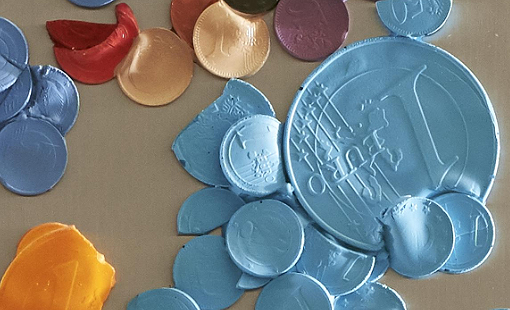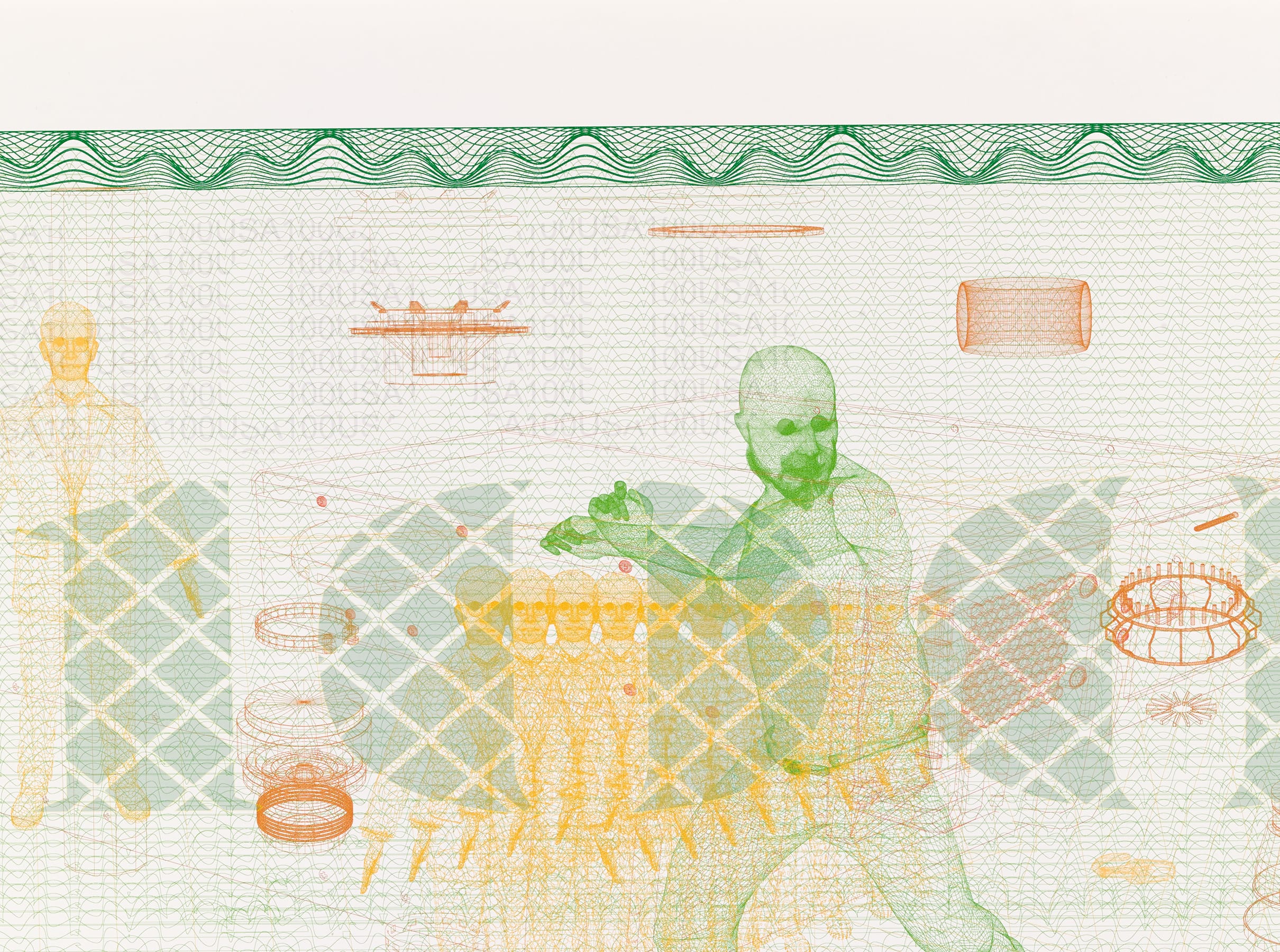
'Itineraries' section updated with a new podcast inviting listeners to imagine 'another history of money'
In the Itineraries section of our website, we invite outside writers – historians, writers, journalists, artists, etc. – to fashion their own tours of the Banco de España Collection. In the latest edition, Sheep, Systems, Chocolates and Plants: Another History of Money, the text and pictures are accompanied by a podcast in which curator and writer Sonia Fernández Pan talks to Patricia Esquivias, Francesc Ruiz, Rubén Grilo and Fritzia Irízar about their works in the collection and other issues related to their creative work and artistic research.
![Patricia Esquivias. Fiesta de la trashumancia 2020, 2020 | Francesc Ruiz. Marcar, 2016 [detalle] | Rubén Grilo. Mongrels #4, 2019 [detalle] | Fritzia Irízar. Sin título (Plantas selva yucateca en peligro de extinción), 2020-2021. Colección Banco de España](/f/webca/ADS/Noticias/ImgPodcatsOHDD03.jpg) Patricia Esquivias. Transhumance Day 2020, 2020 | Francesc Ruiz. Branding, 2016 [detail] | Rubén Grilo. Mongrels #4, 2019 [detail] | Fritzia Irízar. Untitled (Endangered plants from the Yucatan jungle), 2020-2021. Banco de España Collection
Patricia Esquivias. Transhumance Day 2020, 2020 | Francesc Ruiz. Branding, 2016 [detail] | Rubén Grilo. Mongrels #4, 2019 [detail] | Fritzia Irízar. Untitled (Endangered plants from the Yucatan jungle), 2020-2021. Banco de España Collection
In her introductory essay![]() for the itinerary, Fernández Pan explains that her exploration of the collection was guided by the concepts of 'economy and money' – themes that lie behind many of the works in the collection, especially those by more recent artists. Beyond the obvious links – such as the fact that the collection is held by a bank, and that contemporary art and critical thinking, in the same way as the financial markets, place great importance on speculation – this exploration of the theme of money was also driven by a desire to provide a fresh perspective, questioning the issue through new 'works and voices'.
for the itinerary, Fernández Pan explains that her exploration of the collection was guided by the concepts of 'economy and money' – themes that lie behind many of the works in the collection, especially those by more recent artists. Beyond the obvious links – such as the fact that the collection is held by a bank, and that contemporary art and critical thinking, in the same way as the financial markets, place great importance on speculation – this exploration of the theme of money was also driven by a desire to provide a fresh perspective, questioning the issue through new 'works and voices'.
The podcast highlights the fact that although money is something we think about every day and one that determines (almost) everything we do, we do not really understand it – or at best, only to a limited extent. As Fernández Pan says, 'what makes it so tricky to pin down is not just the way it slips through our hands, but also its ubiquity', its intrinsic volatility, which has been accentuated by the emergence of the digital economy. As artist Lúa Cordech told her, the financial markets and the stock market are 'present-day mythological beings' which – like it or not – govern our lives. 'However abstract they may seem, their effects are very concrete and material'.
Money, the economy and their symbolic and material effects on territories and people's lives are all central themes of the work of Esquivias, Ruiz, Grilo and Irízar. Fernández Pan says that their dialogue took an 'intuitive direction', as she explored the 'possibility of incorporating gestures from one conversation into another', beyond any 'explicit questions and comments on their works or their ways of doing and thinking'.
Sheep, Systems, Chocolates and Plants: Another History of Money can therefore be seen as a 'conversation with more intersections than straight lines' and is intended as a polyhedral but unitary story. The conversation, says Fernández Pan, begins in a 'territory with ancestral forms of economy and continues through different systems, materials, logics and events in which money plays some role, before returning to some of the natural environments exploited by capital'.
The podcast also features music by Stephen McEvoy and comes with the usual image carousel, including the works from the collection around which Fernández Pan's itinerary is structured, as well as other pieces, exhibitions and documents of various kinds mentioned by the artists.
